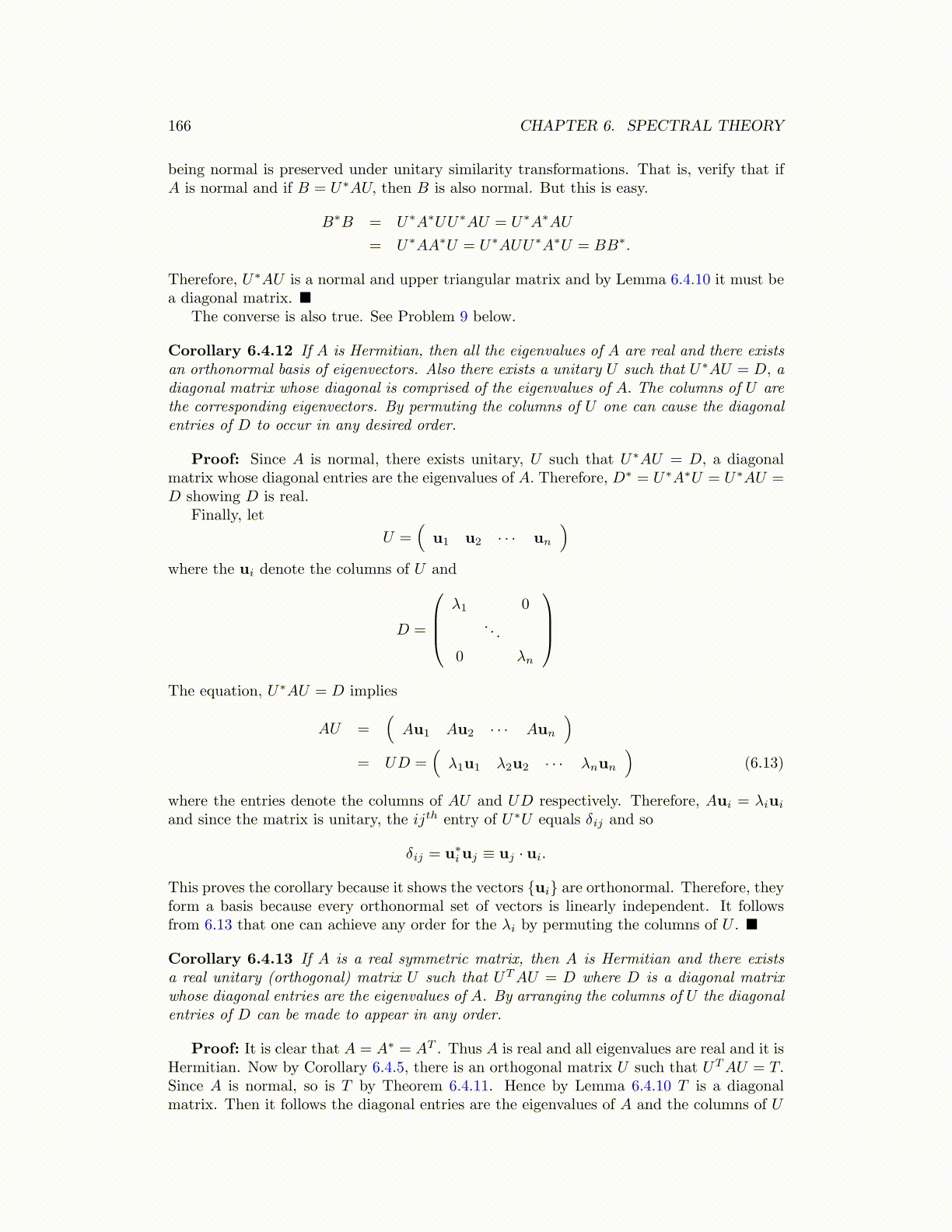
166 CHAPTER 6. SPECTRAL THEORY
being normal is preserved under unitary similarity transformations. That is, verify that ifA is normal and if B = U∗AU, then B is also normal. But this is easy.
B∗B = U∗A∗UU∗AU = U∗A∗AU
= U∗AA∗U = U∗AUU∗A∗U = BB∗.
Therefore, U∗AU is a normal and upper triangular matrix and by Lemma 6.4.10 it must bea diagonal matrix. ■
The converse is also true. See Problem 9 below.
Corollary 6.4.12 If A is Hermitian, then all the eigenvalues of A are real and there existsan orthonormal basis of eigenvectors. Also there exists a unitary U such that U∗AU = D, adiagonal matrix whose diagonal is comprised of the eigenvalues of A. The columns of U arethe corresponding eigenvectors. By permuting the columns of U one can cause the diagonalentries of D to occur in any desired order.
Proof: Since A is normal, there exists unitary, U such that U∗AU = D, a diagonalmatrix whose diagonal entries are the eigenvalues of A. Therefore, D∗ = U∗A∗U = U∗AU =D showing D is real.
Finally, let
U =(
u1 u2 · · · un
)where the ui denote the columns of U and
D =
λ1 0
. . .
0 λn
The equation, U∗AU = D implies
AU =(Au1 Au2 · · · Aun
)= UD =
(λ1u1 λ2u2 · · · λnun
)(6.13)
where the entries denote the columns of AU and UD respectively. Therefore, Aui = λiui
and since the matrix is unitary, the ijth entry of U∗U equals δij and so
δij = u∗iuj ≡ uj · ui.
This proves the corollary because it shows the vectors {ui} are orthonormal. Therefore, theyform a basis because every orthonormal set of vectors is linearly independent. It followsfrom 6.13 that one can achieve any order for the λi by permuting the columns of U . ■
Corollary 6.4.13 If A is a real symmetric matrix, then A is Hermitian and there existsa real unitary (orthogonal) matrix U such that UTAU = D where D is a diagonal matrixwhose diagonal entries are the eigenvalues of A. By arranging the columns of U the diagonalentries of D can be made to appear in any order.
Proof: It is clear that A = A∗ = AT . Thus A is real and all eigenvalues are real and it isHermitian. Now by Corollary 6.4.5, there is an orthogonal matrix U such that UTAU = T.Since A is normal, so is T by Theorem 6.4.11. Hence by Lemma 6.4.10 T is a diagonalmatrix. Then it follows the diagonal entries are the eigenvalues of A and the columns of U